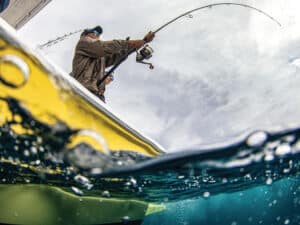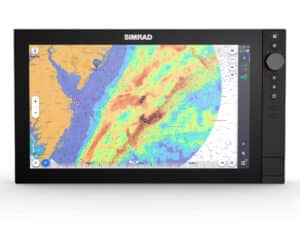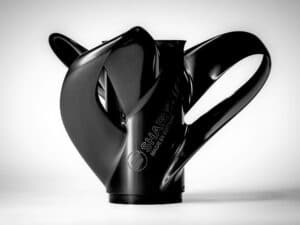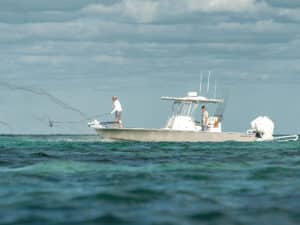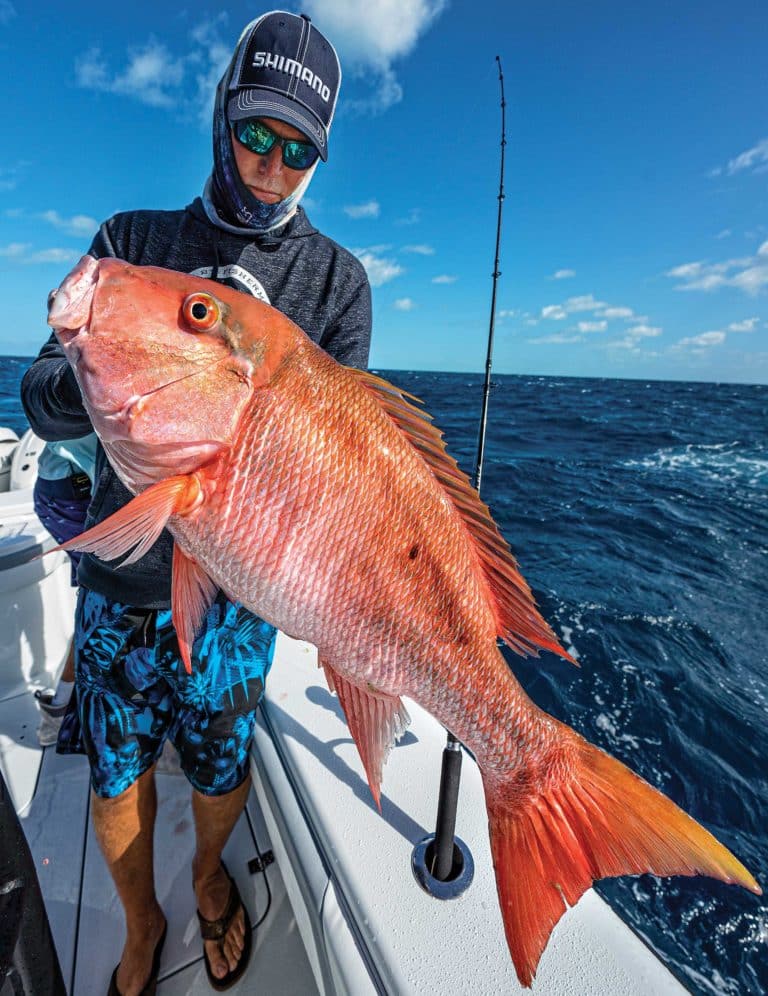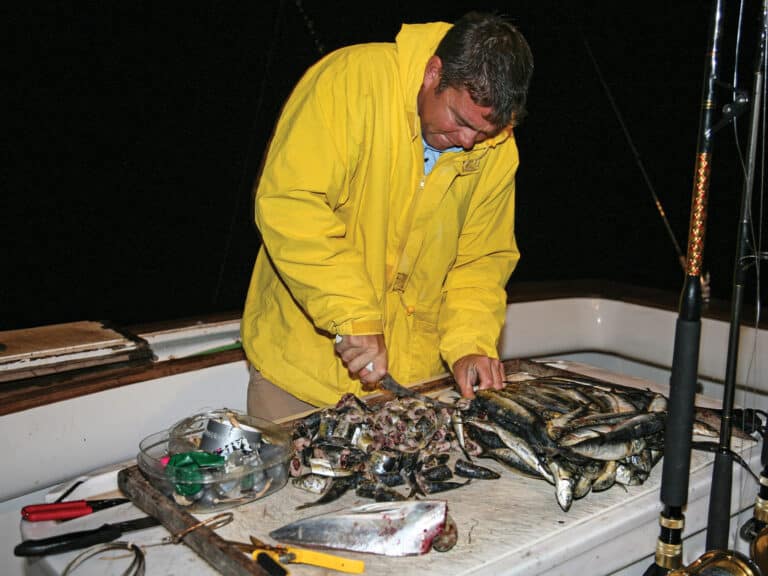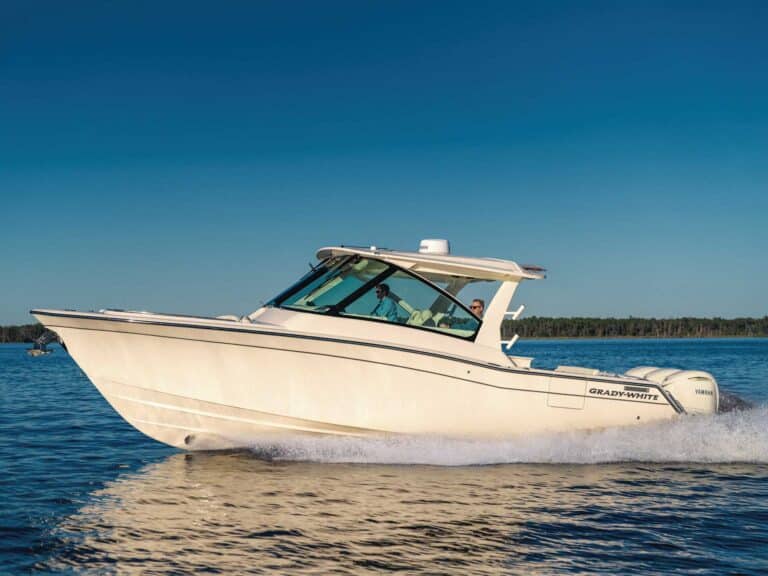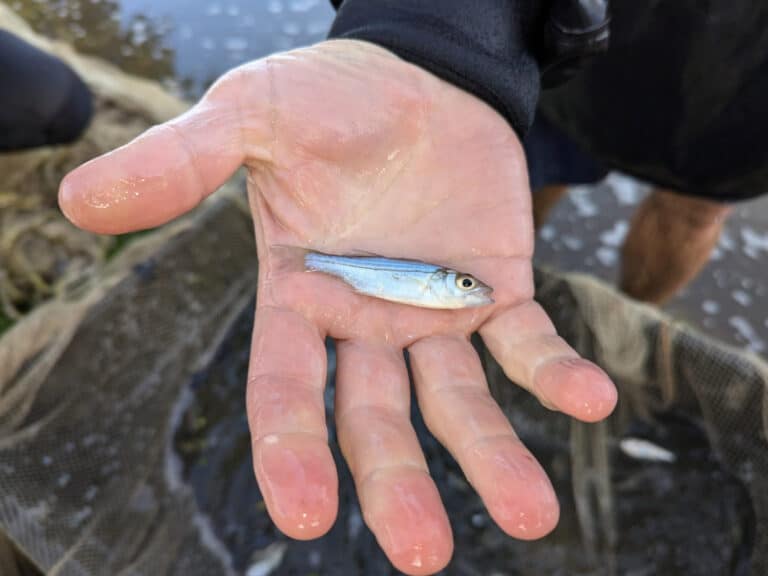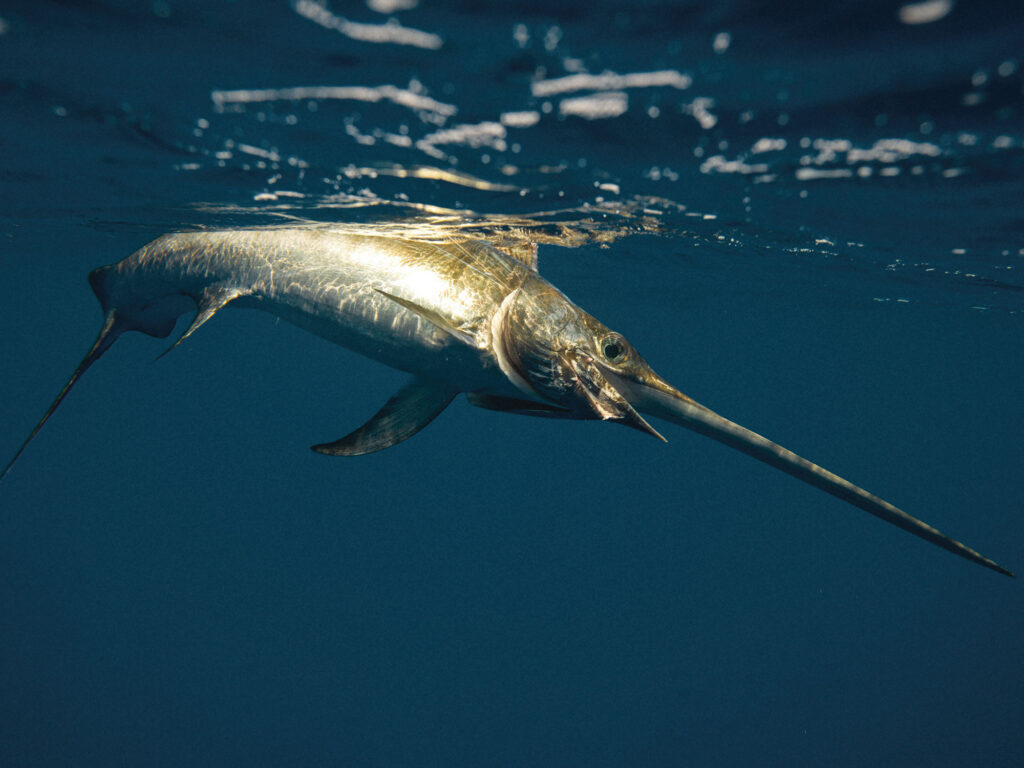
When you think of bluewater fishing in the Gulf, you could be forgiven for visions of live-baiting around oil rigs for big yellowfin and giant blue marlin. You might also think of 60-, 80- or 100-pound wahoo piling onto Ilanders trolled down weed lines. Then there are the bluefin tuna—800-pounders that are caught every year, sometimes on purpose, sometimes by accident.
There is, however, another world-class fishery that resides beneath all of these top-of-the-water-column pelagic hunters. These monsters of the deep are generally targeted over bottom structure in depths ranging from 1,100 to 1,800 feet. That the Gulf is home to an incredible swordfish fishery might come as a surprise to the uninitiated. For those who target them here, the Gulf is a swordfishing wonderland.
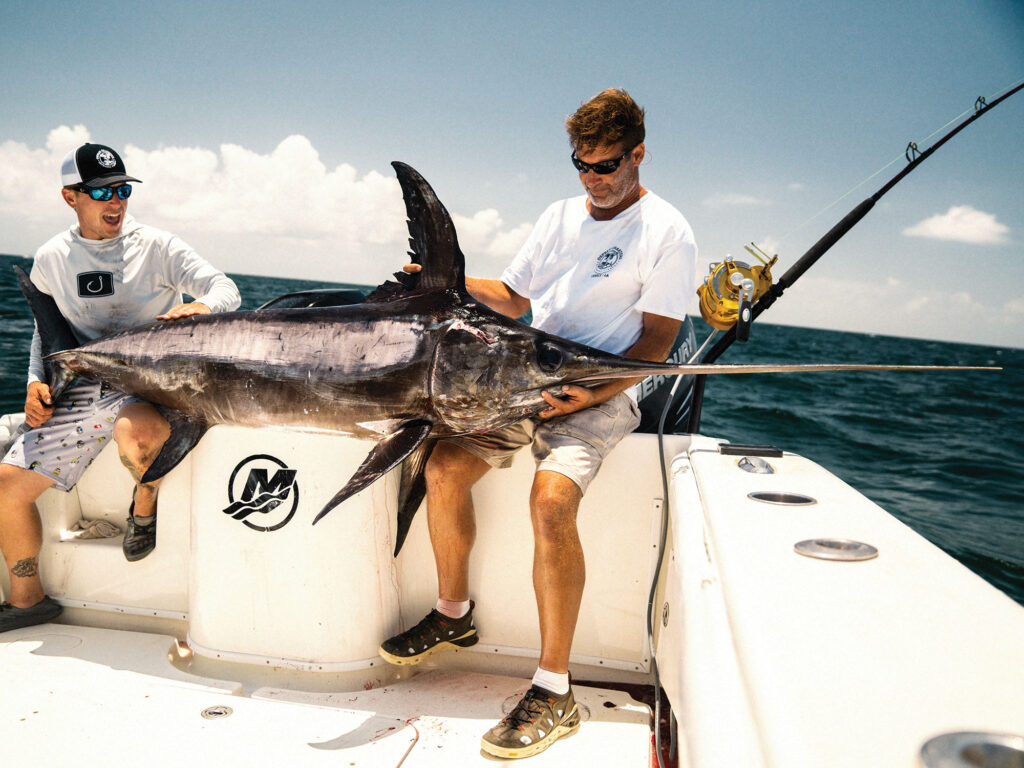
All-In From the Beginning
Capt. Jeff Wilson is something of a godfather in the Gulf Coast swordfishing community. He first swordfished in the Gulf in 2010. Since then, he’s caught some 850 Gulf swords—including true giants. Wilson captained the boat that caught the Texas state record in 2013—a 493-pound fish with a 108-inch short length. He was also the captain for the 313.2-pound sword that won the 2020 Gulf-wide, season-long MONGO Offshore Challenge.
When asked what makes the Gulf such a good and unique swordfish destination, Wilson provides a uniquely qualified perspective. “It’s the bottom. It’s an incredible fishery with incredible bottom. From Port Aransas, Texas, to Louisiana, there are so many spots. You can’t fish them all,” he explains. Much of the swordfishing in the Gulf relates to bottom structure. That approach is different than the Atlantic, where you drift baits in areas with more current to cover ground.
“The other thing that is so nice and easy about it is the lack of current like they have on the East Coast,” Wilson says. “All of that current makes it more difficult. Sometimes you need 10 to 12 pounds of weight to hold your bait in position. In the Gulf, we use sacrificial weights to get the bait down and fish a 3-pound control weight. This allows us to use lighter rods, which makes the bites easier to see.”
The Gulf Coast swordfish fishery takes place far from shore—runs commonly range between 60 and 100 miles from most ports—and is spread out over a large geographical area. When the plentiful bottom topography is factored in with the relatively light fishing pressure, you start to understand why the fishing can be so good for those who do it. “If you can read a chart, you can be successful swordfishing in the Gulf,” Wilson explains. All of these options, however, can make trip planning a bit daunting.
“It’s hard to make a plan because there are so many places. Sometimes you’re exploring, sometimes you’re not,” he says. “Once, when I took a job on a new boat, there was a mark on the machine that said ‘swordfish.’ I asked the guy who put it there. He explained that they caught a bunch of trash fish and didn’t do any good. We went there and caught 14 swordfish.”
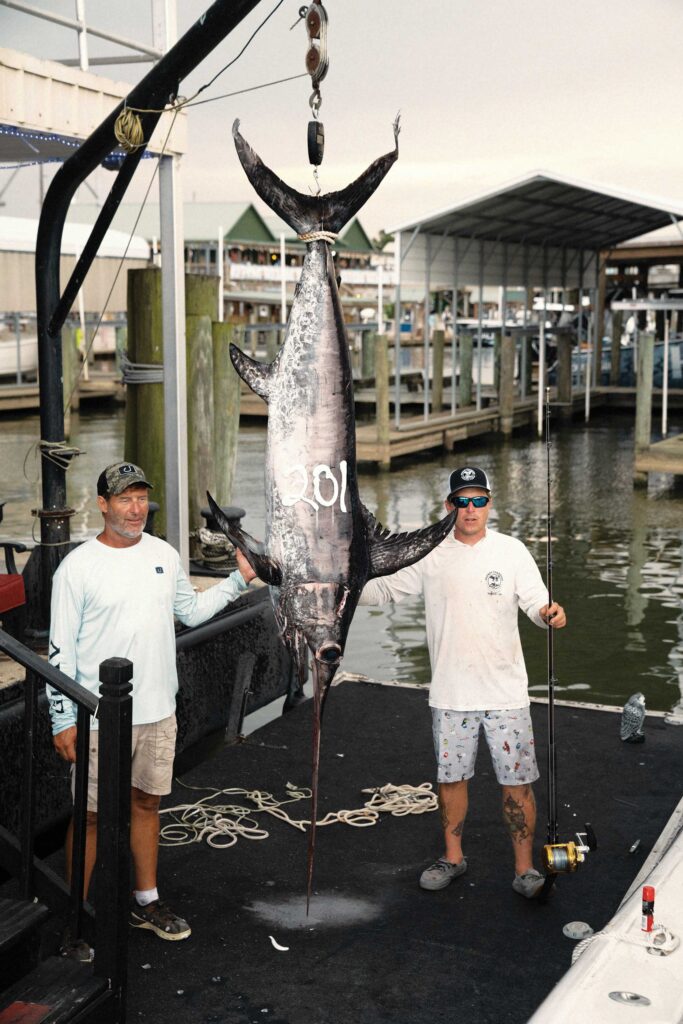
Making Swordfishing Accessible
Capt. Adam Peeples is a nice guy and a hell of a fisherman. His One Shot Charters, out of Destin, Florida, is recognized for putting clients on Gulf swordfish. In an average year, Peeples targets swordfish between 50 and 60 days. The bulk of his fishing involves daytime deep-dropping.
“Our typical run for swordfish ranges between 60 to 80 nautical miles. We mainly target bottom structure that falls between 1,400 and 1,600 feet,” Peeples says. His typical spread involves fishing two rods—one on the bottom and one beneath a buoy.
“For the weight, we fish 2 pounds on the tip rod (the rod fished at the bottom) and four pounds on the buoy rod. The buoy fishes better with a bit of extra lead,” he says. Like Wilson, Peeples deploys a sacrificial lead to get the tip rod to the bottom. These cylindrical weights are connected to the hook that’s rigged into the bait. They are designed to get the bait down quickly. When the weight hits the bottom, it loses tension and falls off. The rod then fishes just the control weight—in Peeples’ case, 2 or 3 pounds of lead attached with a snap swivel to a loop sewn into the main line. This lighter weight keeps the bait in position, without imposing the strain on the rod (or the angler) placed by the 12 pounds necessary to get the bait down 1,400 feet.
Most often, the tip rod is fished on or around the bottom. The angler should hit bottom before reeling, using however many cranks necessary to avoid snagging the seafloor or to reach the appropriate target depth. Peeples typically fastens his control weight 75 feet up the leader from the bait. Braided main line is the name of the game for two reasons: sensitivity (and the ability to see the bite on the rod tip) and decreased scope. The terminal end of the setup involves a section of heavy mono wind-on leader ending in a bait leader.
Peeples fishes his second rod beneath a buoy. This rod is designed to deploy baits that target swordfish in different depths of the water column. “I have different loops at every 100 feet. Some days we fish at the same depth as the tip rod. We’ll get doubles when it’s good,” Peeples laughs. “When we’re searching for fish, the buoy and the tip rods will fish at different depths. Some days when the bites are up, we’ll bring the tip rod shallower.”
Often, there’s little to no current where Peeples fishes. “We use the boat to control the bait placement in relation to the bottom,” he explains. This scenario is much different than swordfish captains fishing in or around the Gulf Stream. In terms of numbers, Peeples says five bites in a day is a good day. His best trip was nine swordfish in a day.
“Our average swordfish runs between 70 and 100 pounds, between 55 and 60 inches short length. Anything over 200 pounds is a big one. A 75-inch fish or bigger is a really nice one,” Peeples says of Destin’s swordfish. “The number of big fish we catch varies year by year. Last year we caught three over 200. The year before that, a dozen. We have pushes of fish that come through. Sometimes there are waves of big fish, but overall, it’s a tough place to catch big swordfish.”
Read Next: Tips and Tricks for Rigging Swordfish Baits
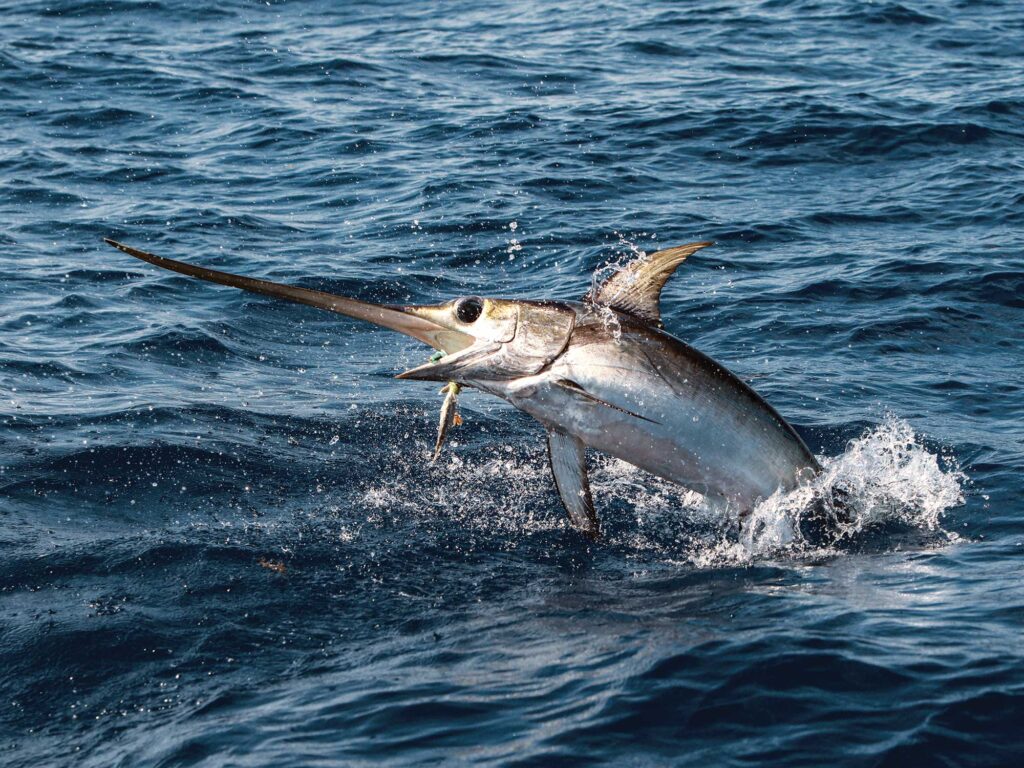
The Texas Overnighter
If anyone knows Gulf billfish, Capt. Anthony Lopez out of Surfside, Texas, is at the top of the list. In 2024, Lopez caught a 300-pound swordfish that won the MONGO Offshore Challenge. He also greased a blue marlin big enough to win the Gulf Coast Billfish Classic. Lopez not only runs a sport-fishing operation, he also founded the Gulf of Mexico Ike Jime, a boutique, sustainable seafood enterprise that provides premium, line-caught Gulf pelagics and bottomfish. Swordfish eat really well too.
“What makes the upper coast of Texas special is the relatively easy access to daytime swordfish,” Lopez explains. “You can fish them at night too. There is not as much pressure as there is in Florida. The distances are greater, but the fishing can be really good.”
Fishing off Texas is structure-specific. Other places have fast drifts covering a lot of ground.
“We generally focus on bottom structure and try to hold on it,” Lopez says. “Where we fish, we tend to target structure in the range of 1,100 to 1,800 feet of water. The runs here are generally 80 to 100 miles.”
Lopez also deploys a two-rod spread when daytime swordfishing. “Sometimes we fish one on a buoy and one on the bottom. Other days, we’ll fish two down rods,” Lopez says of his regular approaches.
The upper Texas coast can produce great swordfish numbers and some big fish as well. “I prefer days of fewer fish, but larger fish,” Lopez says. “Our high-number day was 12 swords. We catch double digits in a 24-hour span pretty regularly. We did that three times last year.”
When targeting swordfish overnight, crews will deep-drop during the day and fish baits deployed higher in the water column at night. The fishing generally takes place over the same bottom, but baits might be fished at depths between 50 and 400 feet at night.
“Our average swordfish runs about 100 pounds. There are lots of areas with concentrations of small fish. I average one big fish—300-plus pounds—for every 100 swordfish I catch,” Lopez explains. “In general, my favorite baits are squids, but we’ll fish with everything. We’re very particular about how we build our wind-ons and rig our baits.”
The care and precision practiced by deft swordfish captains and crews can make this highly specialized operation look easy. Watching those with less skill, experience and ability try to deploy two rods in 1,700 of water without backlashing can be a comedy scene. But increasing numbers of Gulf captains have taken on the challenge, leading to nuanced preparation, deployment and execution. The results speak for themselves.

